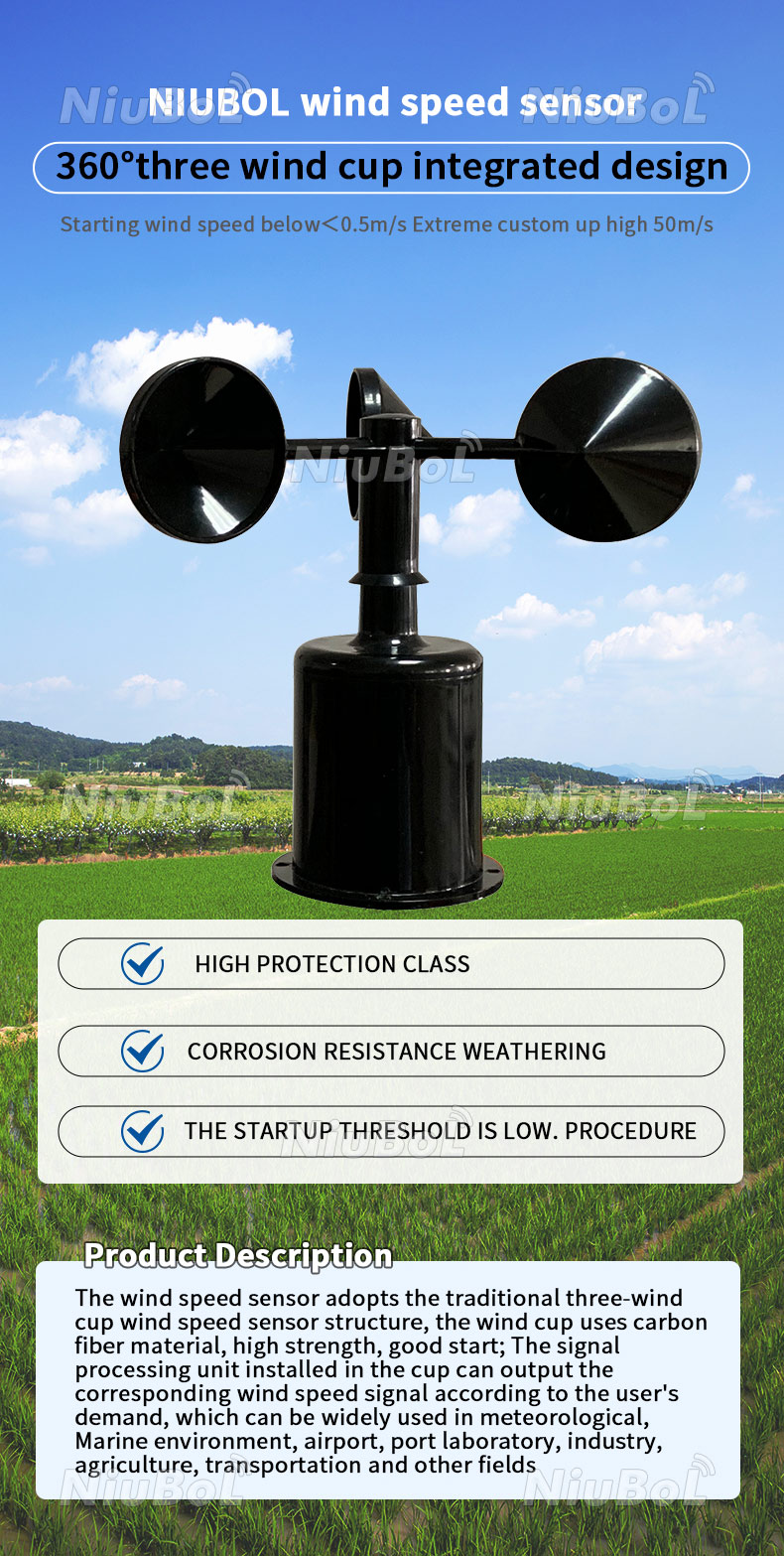The Duty of an Anemometer in Improving Safety And Security for Outdoor Activities
The Duty of an Anemometer in Improving Safety And Security for Outdoor Activities
Blog Article
All You Need to Understand About Anemometers: Just How They Work, Why They Matter, and Where to Utilize Them
Anemometers, though frequently neglected in the world of scientific instruments, play an important role in various areas, using beneficial insights right into wind speed and airflow patterns. As we dive into the details of anemometer modern technology, we will reveal the inner functions of these devices, their value, and the crucial factors to consider when selecting the right anemometer for specific applications.

Anemometer Fundamentals
An important instrument utilized to determine wind rate and instructions, the anemometer plays an important duty in weather forecasting and different markets. An anemometer typically contains 3 or 4 cups that rotate in the wind, a vane that aims right into the wind, and sensing units to track the movements or rotations. By calculating the rotations or motions over a details amount of time, the anemometer can identify wind speed. The vane aids establish wind direction by aiming into the wind, offering beneficial data for climate forecasting, air travel, maritime operations, ecological tracking, and wind energy applications.
There are various types of anemometers available, consisting of cup anemometers, vane anemometers, hot-wire anemometers, and sonic anemometers, each with its unique functions and applications. Cup anemometers are typically used for fundamental wind speed measurements, while vane anemometers are chosen for directional measurements.
Concepts of Anemometer Procedure
Building on the fundamental understanding of anemometer fundamentals, the principles of anemometer procedure illuminate the auto mechanics behind wind speed and instructions measurements. Anemometers run on the principle of air flow influencing a sensor, creating it to revolve. Cup anemometers, as an example, have 3 or even more cups that catch the wind, triggering them to spin quicker as the wind rate increases. The turning speed is then transformed right into a wind rate dimension. Vane anemometers, on the various other hand, utilize a tail or a probe that straightens itself with the wind instructions, providing a measurement of wind instructions based on the positioning of the sensing unit. Hot-wire anemometers count on a warmed wire that cools as wind overlooks it, with the price of cooling down identifying the wind rate. Ultrasonic anemometers action wind speed and direction by assessing the time it considers ultrasonic signals to take a trip in between transducers. Comprehending these principles is crucial for trusted and exact wind dimensions in numerous applications.
Relevance of Anemometers
The importance of anemometers in weather forecasting and numerous markets can Click Here not be overstated. Anemometers play a critical duty in measuring wind speed and direction, offering crucial information for weather condition forecasting, climate research studies, ecological surveillance, and air travel procedures. Meteorologists count on anemometers to collect exact wind information, aiding them understand weather condition patterns, forecast tornados, and concern prompt cautions to the general public. In sectors such as building and construction, farming, renewable resource, and maritime procedures, anemometers are used to maximize procedures, guarantee security, and raise performance. For example, wind farm operators utilize anemometers to evaluate wind conditions and optimize electrical power manufacturing from wind generators. In the maritime field, anemometers help ship navigating by offering real-time wind information to captains, helping them make notified choices to guarantee safe trips. In general, anemometers are vital tools that contribute considerably to safety and security, efficiency, and notified decision-making in meteorology and a vast array of markets.
Applications Across Numerous Industries
Applications of anemometers extend throughout diverse industries, showcasing their adaptability and utility beyond weather forecasting. In the renewable resource sector, anemometers play an click for source essential role in evaluating wind problems for wind ranch placements, ensuring ideal energy production. Industries like building and mining make use of anemometers to keep track of wind rates, important for security methods, especially when working at elevations or in open-pit mines where strong winds can posture risks. Anemometers are likewise integral in the air travel market, aiding pilots in comprehending airspeed and wind instructions for safe liftoffs and landings. The maritime sector take advantage of anemometers for ship navigation, assisting seafarers prepare for climate changes and change courses appropriately. In agriculture, anemometers aid farmers in taking care of plant spraying by providing real-time information on site wind rate to avoid drift. Anemometers discover applications in A/c systems to maximize air flow and enhance power effectiveness in structures. The varied usage cases of anemometers underscore their importance across various industries, highlighting their vital role in boosting operational safety and security and efficiency (anemometer).

Selecting the Right Anemometer for Your Demands
For general objectives, a cup anemometer is ideal for gauging wind speed, while a vane anemometer provides wind direction data. Hot-wire anemometers are suitable for low airspeed measurements, and ultrasonic anemometers use high accuracy and sturdiness.

Final Thought
In verdict, anemometers play a crucial role in determining wind speed and instructions throughout various industries. It is essential to consider the importance of anemometers in order to make enlightened decisions when picking the most suitable device for determining wind conditions.
There are numerous types of anemometers offered, including cup anemometers, vane anemometers, hot-wire anemometers, and sonic anemometers, each with its one-of-a-kind attributes and applications. Mug anemometers are generally utilized for fundamental wind rate measurements, while vane anemometers are preferred for directional dimensions. Hot-wire anemometers are ideal for low airspeeds, and sonic anemometers are suitable for high-precision dimensions in research study and industrial settings.Building on the foundational understanding of anemometer essentials, the concepts of anemometer procedure clarify the auto mechanics behind wind rate and direction dimensions. For general purposes, a mug anemometer is suitable for measuring wind speed, while a vane anemometer gives wind direction data.
Report this page